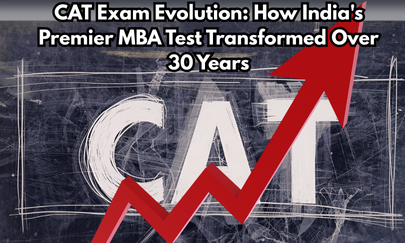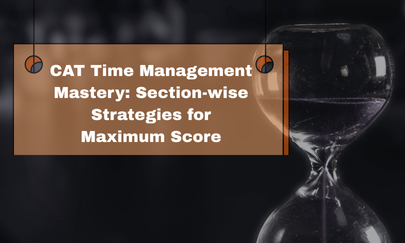
The Common Admission Test (CAT) is one of the most competitive exams in India for admission to prestigious MBA programs. It assesses candidates on various aspects, including Quantitative Aptitude, Verbal Ability, Logical Reasoning, and Data Interpretation. A common dilemma faced by CAT aspirants is balancing speed and accuracy. Both aspects are crucial to scoring well, but the question arises—which matters more in the CAT exam: speed or accuracy?
Understanding the CAT Exam Structure
The CAT exam is structured with a time constraint, typically giving candidates 120 minutes to attempt around 66 questions across three sections. The marking scheme includes a positive score for every correct answer and negative marking for incorrect ones. This format highlights the importance of both speed (to attempt more questions) and accuracy (to avoid penalties from incorrect answers).
The Importance of Speed
Speed is undeniably a critical factor in the CAT exam. With limited time and a significant number of questions to answer, speed ensures that candidates can at least attempt all sections. Here's why speed matters:
- Maximizing Question Attempts: The more questions you attempt, the higher your chance of scoring. Without speed, you may find yourself short on time, leaving several questions unanswered, which directly impacts your overall score.
- Time Management: Managing time across sections is vital to success in CAT. Candidates who practice fast-paced solving are better at allocating time proportionally to each section, ensuring that no area is left unattended.
However, speed without control can lead to carelessness, and that’s where accuracy comes in.
The Role of Accuracy
Accuracy is just as important as speed. Given the negative marking scheme in CAT, accuracy can significantly impact your final score. Here's why accuracy matters:
- Minimizing Negative Marking: Every incorrect answer results in a deduction from your score. Maintaining accuracy ensures that you are rewarded for your efforts and not penalized due to haste.
- Improved Percentile: While attempting many questions is beneficial, maintaining accuracy raises your chances of securing a higher percentile. High accuracy levels show that you not only attempted questions but also answered them correctly.
Balancing Speed and Accuracy
To excel in CAT, it’s essential to find a balance between speed and accuracy. While speed helps you maximize attempts, accuracy ensures that those attempts contribute positively to your score. Here’s how to strike the right balance:
- Practice and Mock Tests: Regular practice will help you increase your speed while maintaining accuracy. Mock tests simulate the real exam environment and teach you how to manage time effectively while ensuring correct answers.
- Strategize Your Attempts: Don’t rush to answer every question. Instead, focus on attempting those you are confident about and avoid guesswork on tricky questions. If time permits, revisit questions you’ve skipped.
- Work on Weak Areas: Identify your weaker sections and work on improving speed and accuracy through targeted practice. For example, if Quantitative Aptitude slows you down, focus on quick solving techniques for that section.
The answer isn’t as straightforward as choosing between speed and accuracy. In the CAT exam, both aspects complement each other. Speed helps you attempt a higher number of questions, but without accuracy, your efforts might lead to negative marking and a lower score. The key to success lies in mastering both—working swiftly while ensuring you answer questions correctly. Through consistent practice and smart strategy, candidates can achieve the right balance between speed and accuracy to ace the CAT exam.
Both speed and accuracy matter equally in CAT—the real challenge is how effectively you can combine them for a high score.
Any question in your mind?
Connect to our counsellor: 8826807515












